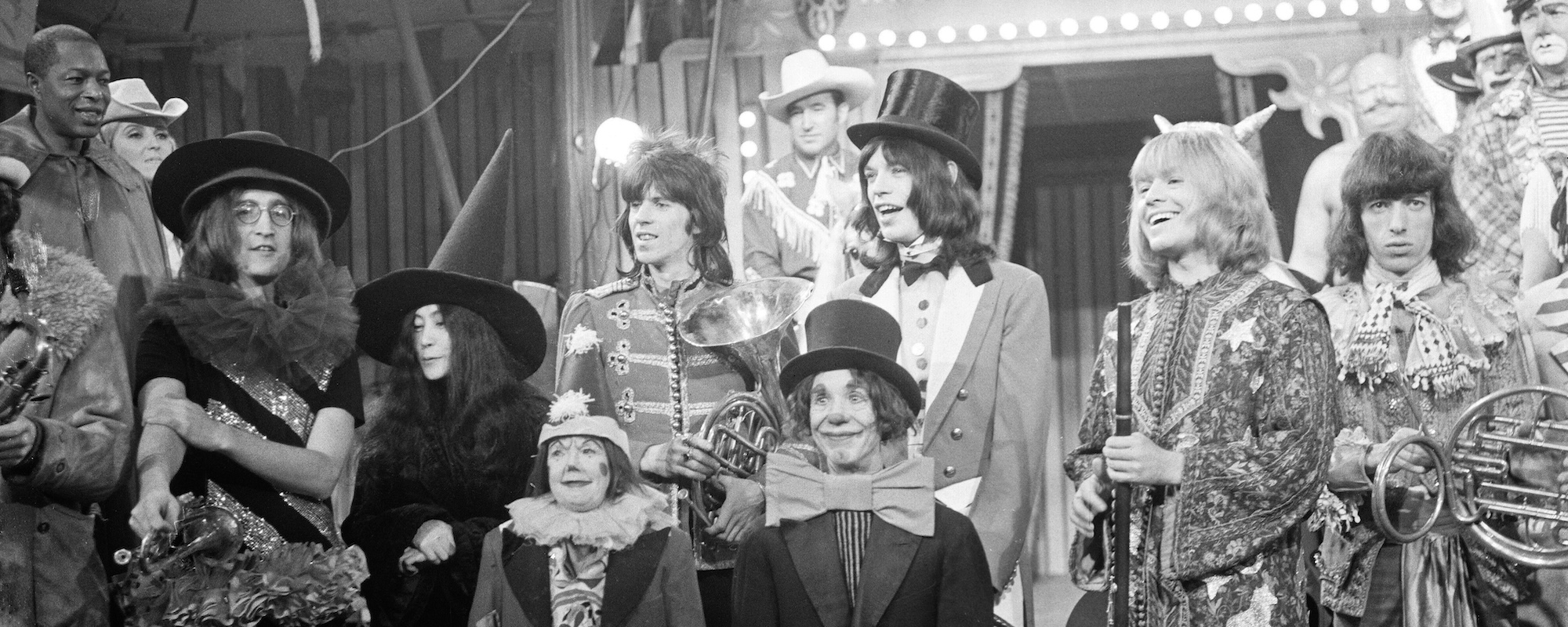Perhaps because it was followed up by portentous, concept-driven albums in The Who‘s catalog, the band’s 1967 record The Who Sell Out doesn’t quite get the same kind of love from casual rock fans. Yet it is, in its mischievous way, as ingenious as any of those records to come, and as fun an LP as the band ever released.
Videos by American Songwriter
How did this album come to life? And what inspired the concept, as devised by the band’s artistic leader Pete Townshend? Let’s go back to a time when The Who posed the theme that music and commerce were irrevocably intertwined.
Under the Gun
The old adage that claims necessity is the mother of invention sort of applies to The Who Sell Out. But for Pete Townshend, the man who would write the bulk of the album, frustration also played a big part. His band had been keeping up a very busy touring schedule throughout 1967, and yet were due to crank out an album by the end of the year.
Lacking material, he asked the band’s managers if The Who could include previously released singles on the album, thereby lessening his songwriting burden. But he was told those songs were meant for greatest hits compilations based on the arrangement made with the record company. That meant he’d have to dig through the songs he had written but not yet recorded, while also coming up with new stuff.
Thanks to a song called “Odorono,” which told the story about a girl whose aspirations of stardom are felled by her body odor, Townshend and band manager/producer Kit Lambert latched onto a concept: What if the song were actually just a big setup for an advertisement? And what if the entire album was little more than a kind of delivery system for ads?
Since the album would then be songs followed by ads, the men also realized that it played like a radio station. The Who were fans of pirate radio, the stations that were run clandestinely without oversight by the British government. Thus, they added that concept to the pot, and The Who Sell Out took shape.
One Big Commercial … with Some Killer Songs
The pirate radio station ID tags and the quasi-commercials (Who bassist John Entwistle wrote a pair of clever ones in “Heinz Baked Beans” and “Medac”) were surrounded by a host of mostly shortish (except for the closing tracks on each side) Townshend originals that found him tossing off winning melodies with aplomb. These songs were relaxed and punchy all at once, a style of writing you wouldn’t normally associate with the writer of so many epic rock tracks.
Lyrically, Townshend also took turns delivering offbeat and charming character sketches (“Odorono,” “Tattoo,” “Mary Anne with the Shaky Hand”) and touchingly personal takes on the ups and downs of romance (“Sunrise,” “Our Love Was.”) He also took more lead vocals than on any other Who album, perhaps because, as he speculated in later interviews, Roger Daltrey was preoccupied during the making of the record with his then-girlfriend’s dalliances with Jimi Hendrix.
Yet for all the irreverence attached to the bulk of The Who Sell Out, Townshend couldn’t help telegraphing where his ambition was about to take the band’s music. Side One closer “I Can See for Miles” is a beast, the music tensing up and uncoiling into thrilling climaxes over and over again. And the album-closing “Rael” is a mini-rock opera. It’s a test run of sorts, especially when you consider their next studio album was Tommy.
The Legacy of The Who Sell Out
We tend to glamorize the ’60s scene as an ideal in music history. But it’s important to note rock bands and pop stars doing commercials and selling their music to companies was a common practice even then. Thus, The Who Sell Out wasn’t so much a forward-thinking idea as it was satirical reportage by the band.
But the funny thing about it is they ended up inadvertently proving their concept was a bit flawed. The Who Sell Out strives to make the case as a whole that even the best rock music could be bought and sold. Yet the songs that pepper the album are undoubtedly priceless.
When you purchase through links on our site, we may earn an affiliate commission.
Photo by Wilson Lindsay/Michael Ochs Archives/Getty Images












Leave a Reply
Only members can comment. Become a member. Already a member? Log in.